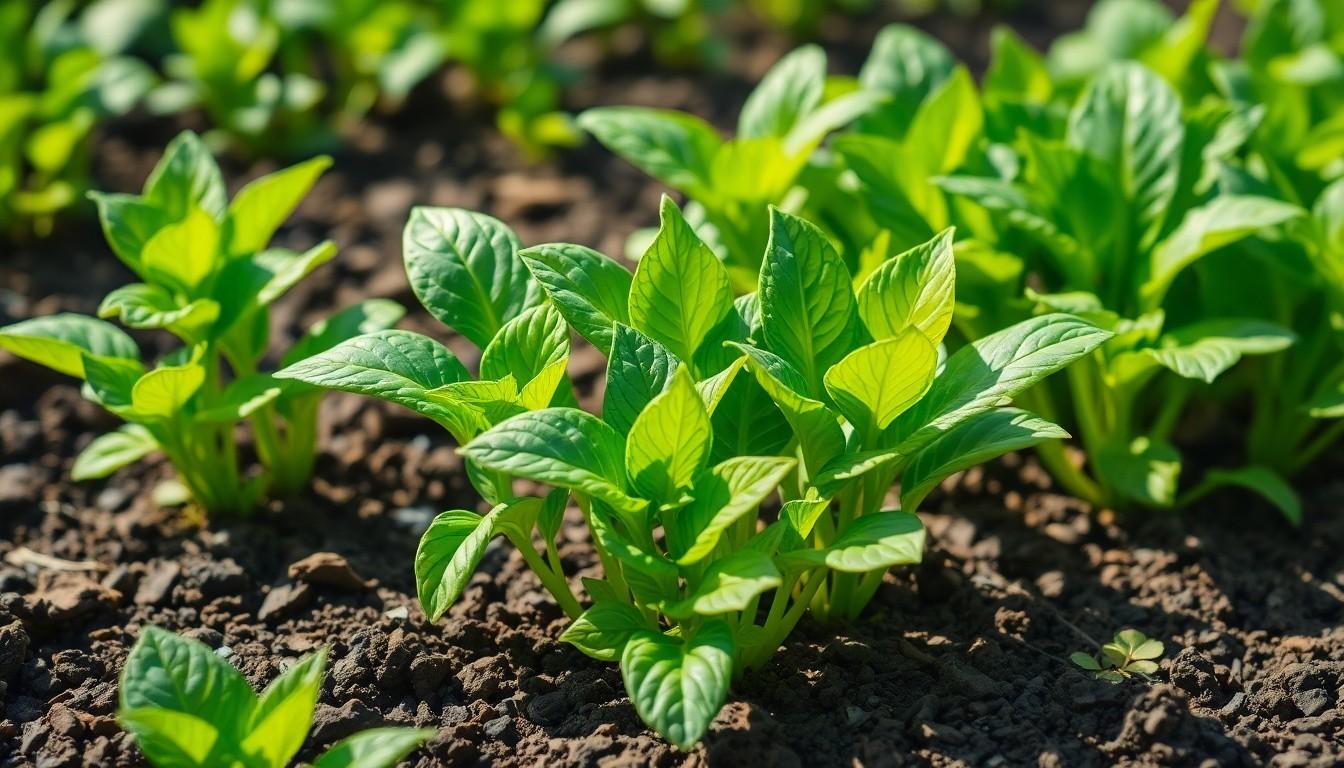Plants are like the divas of the garden—they thrive on attention and the right nutrients. But what happens when they start showing signs of distress? Just like humans, plants can suffer from nutrient deficiencies, turning vibrant green leaves into sad, droopy versions of themselves. Understanding these deficiencies is key to keeping your leafy friends happy and healthy.
Overview of Plant Nutrition
Plants require essential nutrients to thrive. Macronutrients, including nitrogen, phosphorus, and potassium, play a crucial role in plant growth and development. Micronutrients, such as iron, manganese, and zinc, contribute to various physiological processes, albeit in smaller quantities.
Nutrient deficiencies can result in visible symptoms. For example, yellowing leaves often indicate nitrogen deficiency, while stunted growth may arise from a lack of phosphorus. Identifying these deficiencies promptly helps in taking corrective actions to restore plant health.
Soil quality directly impacts nutrient availability. Well-aerated soil promotes root development and enhances nutrient uptake. Organic matter, like compost, can significantly improve soil structure and nutrient content, benefiting plant growth.
Plants absorb nutrients through their roots. This process is influenced by factors such as pH and moisture levels. Maintaining the right pH, generally between 6.0 and 7.0 for most plants, ensures optimal nutrient absorption.
Fertilization practices also affect nutrient levels. Balanced fertilizers provide an appropriate mix of macronutrients and micronutrients. Applying fertilizers at the right time and in the correct amounts enhances plant nutrition, promoting vibrant growth and flowering.
Regular monitoring of nutrient levels contributes to a plant’s overall success. Utilizing soil tests helps gardeners understand the specific needs of their plants. By addressing nutrient deficiencies, it’s possible to cultivate healthy plants capable of thriving in their environment.
Importance of Plant Nutrition

Understanding plant nutrition plays a crucial role in gardening and agriculture. Providing adequate nutrients boosts plant health and enhances growth, ensuring robust yield and vibrant foliage.
Essential Nutrients for Plants
Plants require various essential nutrients to thrive. Macronutrients like nitrogen, phosphorus, and potassium contribute significantly to overall health. Nitrogen promotes vigorous leaf growth, phosphorus supports root and flower development, while potassium enhances resilience against diseases. Micronutrients such as iron, manganese, and zinc, though needed in smaller amounts, are vital for processes like photosynthesis and enzyme function. Deficiencies in any nutrient can disrupt development and lead to visible symptoms like yellowing leaves or poor fruit production.
Role of Nutrients in Plant Growth
Nutrients serve multiple functions in plant growth. Macronutrients foster major structural components like proteins and nucleic acids. Micronutrients play supportive roles, assisting in photosynthesis and cellular respiration. Healthy nutrient levels lead to stronger plants, promoting improved resistance to stress factors such as drought and pests. Additionally, proper nutrient balance influences flowering and fruiting processes, ultimately impacting yield and quality. Regular monitoring and adjustments can ensure plants receive the nutrients required for optimal growth.
Understanding Plant Deficiencies
Understanding nutrient deficiencies is crucial for maintaining plant health. Plants exhibit distinct signs when lacking essential nutrients.
Common Symptoms of Nutrient Deficiencies
Yellowing leaves often signify nitrogen deficiency. Stunted growth frequently points to phosphorus deficiency. Leaf curling can indicate potassium deficiency. Poor fruit development might arise from calcium deficiency. Overall, spotting these symptoms early allows for timely interventions.
Effects of Deficiencies on Plant Health
Nutrient deficiencies can severely impact plant vitality. Weak root systems emerge from insufficient nutrients, leading to poor water uptake. Reduced growth rates result from inadequate nutrient levels, hindering overall development. Flowering and fruiting processes may also suffer, leading to decreased yields. Regular monitoring prevents these negative outcomes and promotes robust plant health.
Plant Nutrition Plant Deficiencies Chart
Understanding nutrient deficiencies is essential for maintaining healthy plants. A clear overview of nutrients and their effects helps gardeners diagnose issues effectively.
Breakdown of Nutrients
Plants require various nutrients to thrive. Macronutrients like nitrogen, phosphorus, and potassium contribute to key processes such as growth and photosynthesis. Nitrogen promotes leaf development, phosphorus enhances root growth, and potassium supports overall plant health. Micronutrients play crucial roles, too. Elements like iron support chlorophyll production, while manganese aids photosynthesis. Zinc promotes enzyme function essential for growth. Identifying the specific nutrient needed enables targeted interventions, preventing long-term damage and ensuring optimal plant vitality.
Visual Representation of Deficiencies
Visual cues provide immediate insight into nutrient deficiencies. For instance, nitrogen deficiency often manifests as yellowing leaves, particularly older foliage. Stunted growth in seedlings typically signals phosphorus deficiency. Leaf curling or browning can indicate potassium shortfalls, while calcium deficiency may lead to poor fruit formation and blossom end rot. Observing these signs allows for timely adjustments to watering or fertilization, enhancing plant health. A deficiencies chart clearly illustrates these symptoms alongside the corresponding nutrients, acting as a quick reference for garden care.
How to Address Nutrient Deficiencies
Addressing nutrient deficiencies in plants requires a strategic approach. Identifying the specific deficiency is key to correcting imbalances effectively.
Soil Testing and Analysis
Soil testing offers vital insights into nutrient levels. Gardeners can determine pH and nutrient content by conducting tests with kits or sending samples to laboratories. Analyzing these parameters reveals whether the soil supports optimal plant growth. Optimal pH levels of 6.0 to 7.0 ensure nutrient availability, while imbalances can hinder absorption. Regular testing, at least once a year, helps maintain healthy soil conditions. Adjustments based on test results can significantly enhance nutrient delivery to plants, fostering better health and growth.
Fertilization Techniques
Fertilization techniques play a crucial role in remedying nutrient deficiencies. Balanced fertilizers, with a proper ratio of nitrogen, phosphorus, and potassium, provide essential macronutrients. Applying nutrients during active growth periods maximizes absorption and reduces waste. Granular and liquid fertilizers serve different needs; granules release nutrients gradually, while liquids promote quick uptake. Over-fertilization should be avoided, as it can harm plants. Utilizing organic fertilizers boosts soil structure and adds micronutrients. Timing and method of application significantly influence nutrient retention and plant response, ensuring lush and vibrant growth.
Conclusion
Understanding plant nutrition is essential for any gardener or farmer aiming for vibrant and healthy plants. By recognizing the signs of nutrient deficiencies and utilizing the Plant Nutrition Plant Deficiencies Chart, one can quickly identify issues and take corrective actions. Regular soil testing and appropriate fertilization practices play a crucial role in maintaining optimal nutrient levels.
With the right knowledge and tools, it’s possible to create an environment where plants can thrive, leading to improved growth, robust yields, and beautiful foliage. Prioritizing plant nutrition ultimately enhances the overall gardening experience and ensures a flourishing garden or farm.

